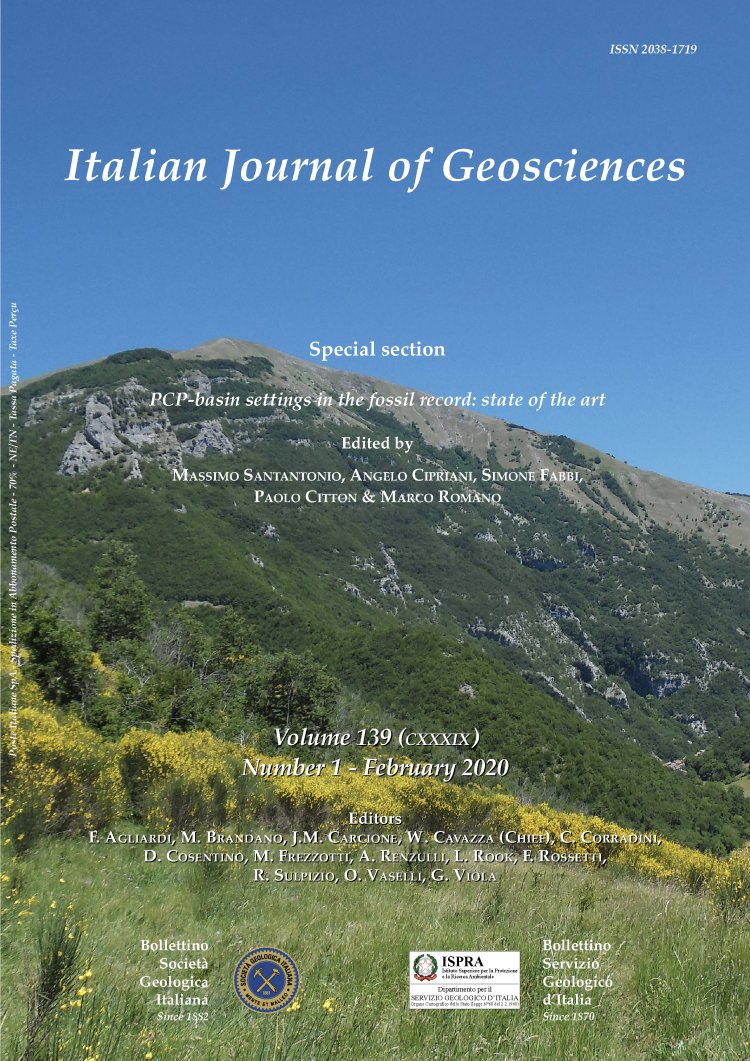
Elemental and Sr-isotope characterization of the high-altitude Bosa vineyard in the Apuan Alps UNESCO Global Geopark (Italy)
Lisa Ghezzi (1), Riccardo Petrini (1), Francesca Castorina (2), Carla Scotti (3), Giuseppe Ottria (4) & Antonio Bartelletti (5)
(1) Dipartimento Scienze della Terra, Università di Pisa.
(2) Dipartimento Scienze della Terra, Università “Sapienza” Roma.
(3) I.TER, Bologna.
(4) CNR, Istituto di Geoscienze e Georisorse, Via S. Maria 53, 56126 Pisa, Italy.
(5) Ente Parco Regionale delle Alpi Apuane, Via Corrado Del Gre- co 11, Seravezza, 55047 Lucca, Italy.
Corresponding author e-mail: lisa.ghezzi@unipi.it
DOI: https://doi.org/10.3301/IJG.2019.20
Volume: 139 (2020) f.1
Pages: 110-117
Abstract
Sr-isotope systematics and trace element analysis were applied to vine and wine collected during the 2015 harvest from the Bosa vineyard, a high-altitude farm in the Apuan Alps UNESCO Global Geopark in Italy, in order to investigate the links with geology in vineyards facing a hostile environment. The results indicate a correspondence between the 87Sr/86Sr ratio in wine and must [87Sr/86Sr = 0.70843(1) and 0.70846(1), respectively] and the NH4OAc extractable Sr from soil [87Sr/86Sr = 0.70847(1)]. However, detailed investigations reveal that Sr- isotope data on grape juice collected in different vines vary in the range between 0.70833(1) and 0.70844(1), reflecting a small-scale vineyard variability and indicating that the root system explores heterogeneous soil resources for nutrient uptake. Grape seeds and stems from one single vine both show identical 87Sr/86Sr of 0.70820(1), significantly lower with respect to corresponding juice [87Sr/86Sr=0.70844(1)]: this finding is unexpected and reflects the uptake from isotopically different reservoir during the evolved dynamic of vine and fruit development. In particular, the lower 87Sr/86Sr ratio is attributed to the minor contribution of an unradiogenic carbonate component. These effects, however, do not mask the existing isotopic relationship between soil and wine at the vineyard scale. Trace elements in wine show a characteristic pattern that roughly mimics bedrock, suggesting a minor role of bedrock chemical weathering in developing the soil profile. Relatively high Fe and Mn contents are measured in wine, inherited from bedrocks, and high Zn, possibly applied to grapevines. Elements that are considered potentially toxic (As, Cd, Cu, Pb, Zn) are below the maximum acceptable limits established by OIV.
Despite preliminary, these data represent the first characterization for traceability of the high-altitude Bosa vineyard, giving some track of weathering and elemental availability in a particular microclimate setting and underlying the link between bedrock geology and element uptake in vines at high elevations with respect to valley grown grapes.
Despite preliminary, these data represent the first characterization for traceability of the high-altitude Bosa vineyard, giving some track of weathering and elemental availability in a particular microclimate setting and underlying the link between bedrock geology and element uptake in vines at high elevations with respect to valley grown grapes.
Keywords
Get Full Text